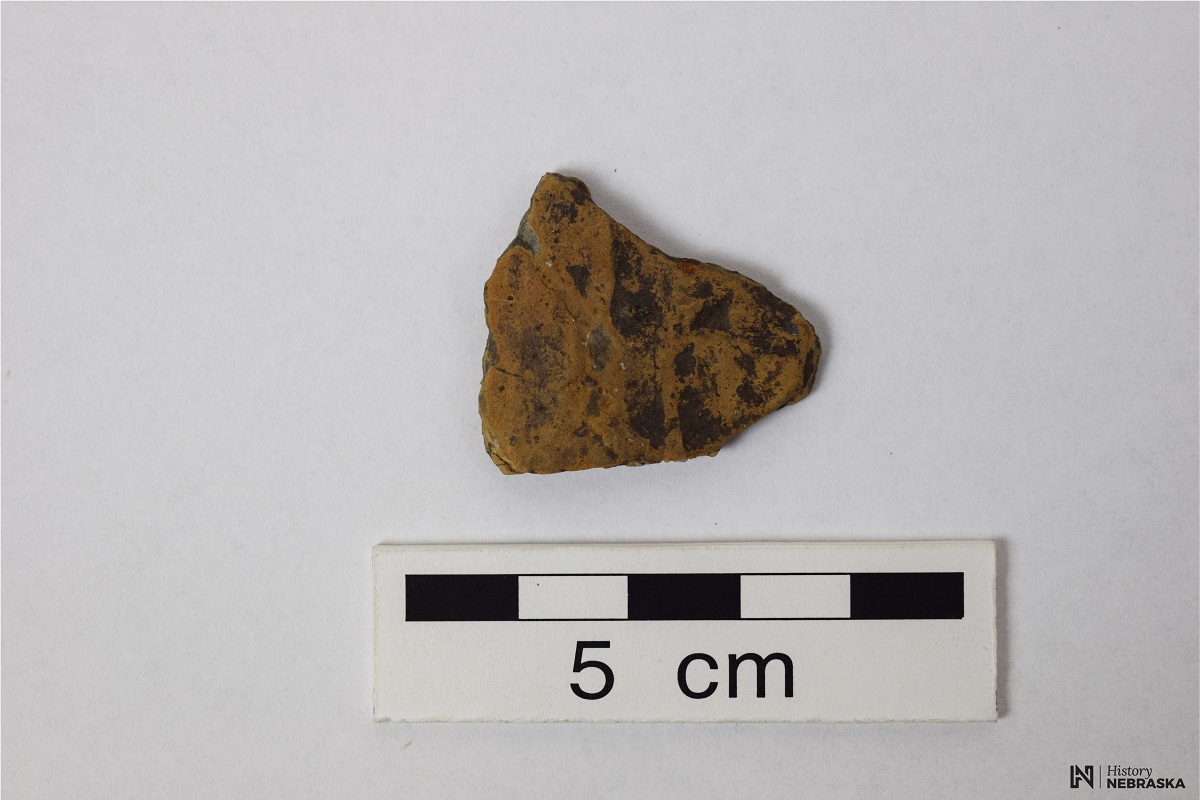Nebraska archeology is renowned for its collection of artifacts and other information related to the Pawnee Tribe. The Pawnee lived over a wide expanse of what is now Nebraska and for longer than any other named Indigenous nation. They left a robust archeological record of villages, camps, sacred sites and cemeteries that become the focus of archeological research by History Nebraska and other agencies from the 1920 to the present. There are hundreds of Nebraska archeological sites related to the Pawnee and their ancestors and a large material culture collection is available for display and research. A more detailed treatment of Pawnee archeology will appear in the next issue of Nebraska History, December 2021.
The History Nebraska (HN) State Archeology Office and the Nebraska Department of Transportation (NDOT) have worked together for over 60 years to identify and minimize effects to Pawnee and other archeological sites along the state’s transportation system (Video Here). Often in conjunction with HN and the NDOT, Native American tribes are involved in the consultation process on projects. A current project on N-22 in Platte County involves the Pawnee Nation. A bridge on the highway needs to be replaced. This bridge is located within the boundaries of an ancestral four hundred-year-old Pawnee earthlodge village named the Hanna Larson site. The site was named after the landowner at the time it was discovered in the 1930s. The potential of the project to impact the site was identified early in project development. By working with the NDOT and the Pawnee Tribal Historic Preservation Office (THPO), HN was able to determine that only a small area directly around the bridge would be impacted.
HN, NDOT, the Pawnee THPO, volunteers, and representatives of Loup Public Power District excavated one-meter square test units to determine if intact archeological deposits remained within the limits of construction for the bridge replacement. The day of the work began less than auspiciously with an early spring snow squall barreling though the area.
The excavations were disheartening for the first part of the day, but the dedicated team kept digging. They discovered on the east side of the bridge under two feet of modern fill dirt an intact buried soil containing stone debris from making tools and pottery sherds from 400 years ago.

Buried Soil Zone Containing Archeological Remnants of the Pawnee Town
One of the pot sherds was large enough to show a surface treatment known as simple stamping. Pawnee potters used a piece of wood or bone with a carved pattern to shape and thin their pots. This process left a set of regularly spaced indentations on the outside of the pots.
These pot sherds confirmed that the village occupation layer had been reached. Archeologists from HN and the NDOT were able to show the sherds to the Pawnee THPO, sherds from pots his ancestors had once used on site. Work on the project continues as HN, the NDOT, and the Pawnee THPO work together to find the best way to preserve the archeological deposits at the site.
Nebraska archeology is renowned for its collection of artifacts and other information related to the Pawnee Tribe.





